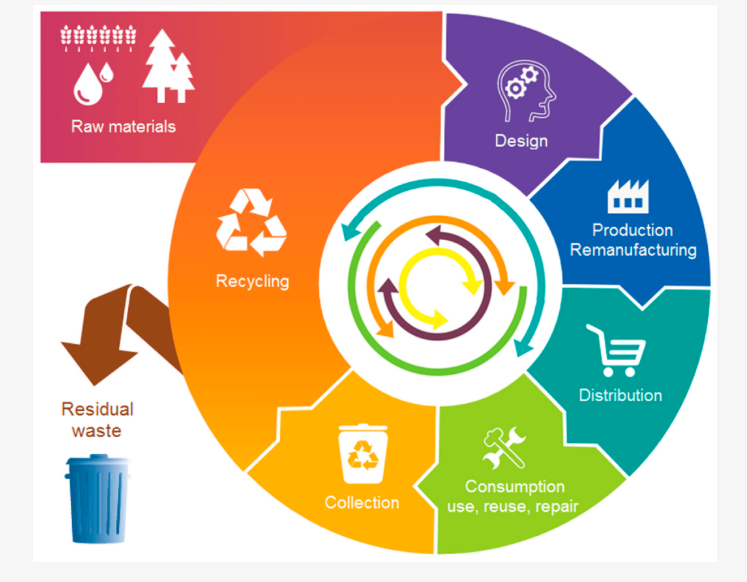As electric vehicles (EVs) continue to gain popularity around the world, their impact on sustainability is becoming increasingly important. While EVs themselves offer a cleaner alternative to traditional gasoline-powered vehicles, the production and disposal of EV batteries present a new set of challenges. In 2024, the focus has shifted toward improving EV battery recycling processes to ensure a sustainable lifecycle for these crucial components. The ability to recycle EV batteries effectively not only helps mitigate environmental concerns but also plays a vital role in reducing costs, conserving resources, and advancing the green economy.
Here’s a closer look at how EV battery recycling is shaping sustainability in 2024 and why it is critical for the future of electric mobility.
The Growing Need for EV Battery Recycling
With the number of EVs on the road skyrocketing, the demand for batteries—especially lithium-ion batteries—is at an all-time high. However, this surge in demand for electric vehicles comes with a parallel need for efficient battery disposal and recycling. By 2024, EV battery recycling is no longer a secondary consideration but a core element of the entire electric vehicle ecosystem.
- Battery Lifespan: EV batteries typically last around 8 to 15 years before their efficiency starts to decline. This creates a significant amount of waste that needs to be handled responsibly.
- Environmental Impact: Mining for raw materials such as lithium, cobalt, and nickel—used in EV batteries—has environmental consequences. Recycling these materials can drastically reduce the need for new mining, lessening the environmental footprint.
- Resource Recovery: EV batteries contain valuable metals and minerals that can be recovered, purified, and reused in the production of new batteries, closing the loop in the battery supply chain.
Key Technologies Advancing EV Battery Recycling in 2024
In 2024, significant advancements in EV battery recycling technologies are making it more efficient, cost-effective, and environmentally friendly.
1. Direct Recycling Technologies
One of the most promising innovations in EV battery recycling is direct recycling, which aims to preserve the structure of the battery’s electrodes and reuse them in new batteries. This process helps to retain the original material properties, potentially improving battery performance and extending battery life.
- Direct Recycling Process: Instead of breaking down the battery into its raw materials, direct recycling reuses the battery’s core components—such as the anodes and cathodes—by simply restoring their electrochemical properties.
- Efficiency Gains: This method can be more energy-efficient and cheaper than traditional recycling methods, which involve melting down materials or separating them into individual components.
2. Closed-Loop Recycling Systems
Closed-loop recycling refers to a process in which materials are continuously recycled into the same product. In the case of EV batteries, this would mean taking used EV batteries and recycling them to create new batteries, without significant loss of material or energy.
- Reduction in Waste: Closed-loop systems help minimize waste and the need for virgin materials, supporting a circular economy for EV batteries.
- Automaker Involvement: Leading automakers like Tesla, Volkswagen, and GM are investing heavily in closed-loop recycling systems, ensuring that used batteries from their vehicles can be efficiently processed and reused for future models.
3. Advanced Sorting and Separation Techniques
Recycling batteries requires separating different materials, such as lithium, cobalt, and nickel, which can be complex and expensive. In 2024, advancements in sorting and separation technologies are helping to streamline this process.
- AI and Robotics: Artificial intelligence (AI) and robotics are being used to automate the identification, sorting, and extraction of valuable materials from spent EV batteries. This reduces labor costs and increases the speed of recycling operations.
- Selective Extraction: New chemical processes are being developed to selectively extract specific metals like lithium and cobalt, which are in high demand and can be reused in new batteries without contamination.
4. Second-Life Applications for EV Batteries
In addition to traditional recycling, used EV batteries are increasingly being repurposed for second-life applications before they are fully recycled.
- Energy Storage: Used EV batteries, while no longer suitable for powering vehicles, can be used for energy storage systems. They are increasingly being integrated into grid storage solutions, allowing excess renewable energy (such as solar and wind power) to be stored and used later.
- Solar Power Integration: Companies are pairing second-life EV batteries with solar energy systems to create more sustainable, off-grid solutions for homes and businesses.
The Environmental and Economic Benefits of EV Battery Recycling
1. Reduced Environmental Impact
Recycling EV batteries helps reduce the environmental impact associated with mining and waste disposal. By recovering valuable metals and materials, we reduce the need for new mining operations, which are often resource-intensive and harmful to ecosystems.
- Lower Carbon Footprint: Recycling materials like lithium and cobalt consumes significantly less energy than extracting them from the earth, lowering overall greenhouse gas emissions.
- Waste Reduction: Proper disposal and recycling prevent toxic materials in EV batteries, such as cadmium and lead, from leaching into the environment.
2. Resource Conservation
The demand for raw materials for EV battery production continues to rise. In 2024, effective recycling programs are crucial for ensuring a steady and sustainable supply of materials, helping avoid resource shortages and price volatility.
- Cobalt and Lithium Recovery: As two of the most critical metals in EV batteries, cobalt and lithium are both finite resources. Recycling ensures that we make the most out of these materials and reduce dependence on mining.
- Battery Material Security: By recycling, automakers and governments can reduce reliance on unstable global supply chains for critical materials.
3. Cost Reduction
Recycling helps cut costs in the long term by lowering the need for new materials and manufacturing.
- Lower Battery Costs: As recycling technologies become more efficient, the price of recycled materials will decrease, which in turn can reduce the overall cost of EV batteries.
- Boosting EV Affordability: With lower battery costs, automakers can produce more affordable electric vehicles, making EVs accessible to a broader consumer base.
Global Initiatives Supporting EV Battery Recycling in 2024
Governments, automakers, and recycling companies are increasingly coming together to establish regulations and initiatives that promote EV battery recycling.
- EU Regulations: The European Union has set ambitious targets for EV battery recycling, including requiring a significant percentage of materials to be recycled by 2030. The EU is also focusing on reducing the environmental impact of battery disposal and establishing take-back programs.
- Battery Recycling Startups: Companies like Li-Cycle, Redwood Materials, and American Battery Technology Company are leading the charge in developing large-scale recycling facilities to handle the growing demand for battery recycling.
- Extended Producer Responsibility (EPR): Many regions are introducing EPR regulations that hold manufacturers responsible for the end-of-life management of the batteries they produce. This ensures that companies have a financial incentive to invest in recycling infrastructure.
Conclusion: The Future of EV Battery Recycling
As the adoption of electric vehicles continues to rise in 2024, so does the need for sustainable solutions for battery disposal and recycling. Advances in recycling technologies, second-life applications, and government regulations are all contributing to the establishment of a circular economy for EV batteries.
By focusing on the recycling and repurposing of EV batteries, we can significantly reduce environmental impact, conserve vital resources, and ensure the long-term sustainability of the electric vehicle industry. The future of EVs is not just about driving clean; it’s about creating a closed-loop ecosystem where every battery, from production to end-of-life, plays a vital role in protecting our planet.
0




